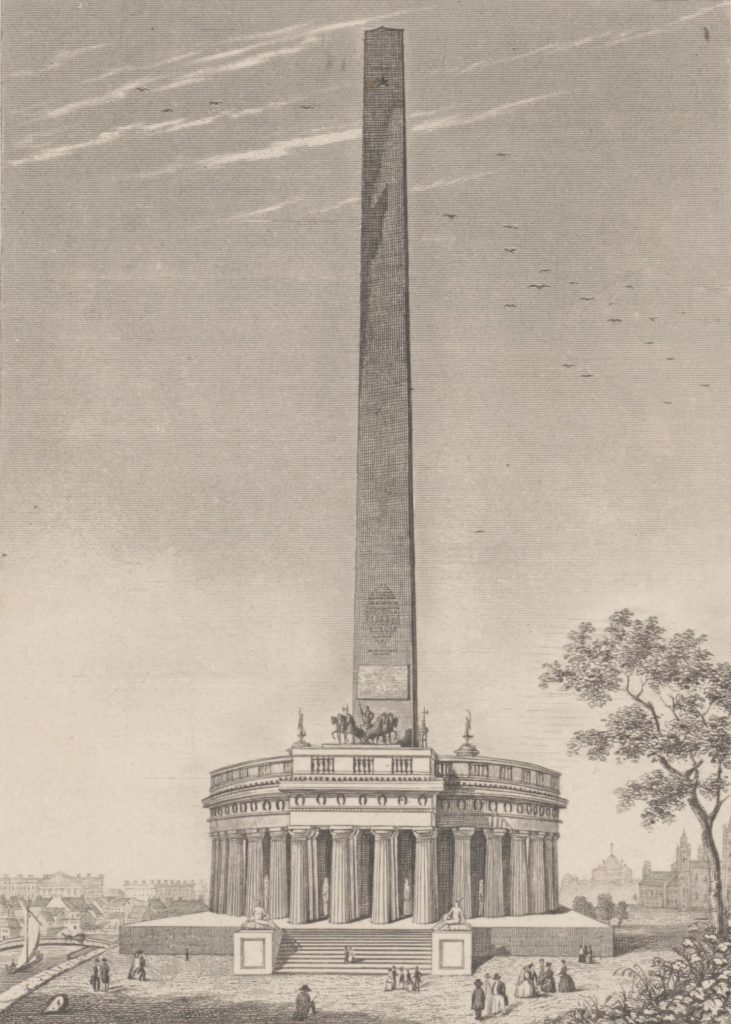The Washington Monument is one of the most recognized pieces of architecture in the United States. I can spend hours taking photos of this giant with its pointed obelisk soaring into the sky. You instantly know what it is without needing to be told. It is considered a must-see attraction for those visiting Washington, D.C., whether you walk up the stairs inside or just stand outside in front of it for an excellent American photo op. Here are the interesting details on the Washington Monument, its history, architecture, and construction.
Built to commemorate the first US President, George Washington, the Washington Monument is located east of the Lincoln Memorial and the Reflecting Pool on the Mall at Washington, D.C. It is made of a mixture of granite, marble, and bluestone gneiss. Measuring 554 feet tall, it is the tallest stone structure in the world, as well as the tallest obelisk in the world. It is also the tallest column in the world if all the columns in the world are measured from above their pedestrian entrances. There was a brief period, from 1884 to 1889 when it was the tallest manmade structure in the world. The record was taken from it by the construction of the Eiffel Tower in France.
Construction on the Washington Monument began in 1848 but was halted from 1854 to 1877 because of lack of funding, a rivalry for control of the Washington National Monument Society and the American Civil War. The basic structure was finally completed in 1884. However, the knoll, the interior ironwork, and the minute finishing touch details were not completed until four years later. Because of the break in construction, there is a noticeable difference in the color of the marble used on the building. It begins about 150 feet up and is the easily noticed place where construction stopped and began again, using a different marble source.

Print of the proposed Washington Monument by architect Robert Mills (circa 1845–1848) (Wikipedia)
Robert Mills made the original design of the Washington Monument. His design included a colonnade, which was not constructed, due to lack of funds. When the money was counted, all that was available was to build the bare obelisk that we know and love today. The cornerstone of the structure was placed on July 4, 1848, in a symbolic celebration of the founding of the nation Washington helped lead into existence. The completed building was dedicated on February 21, 1885, and opened to the public on October 9, 1888.
Amazingly, the walls of the Washington Monument, which is a hollow obelisk, are only seven inches thick, which is relatively thin for such a tall monument. It is supported by six arches, with two of them being located between the opposite walls crossing the center of the building, and the other four being smaller arches located in corners. There is a large capstone made of marble on top of the Washington Monument, and a smaller pyramid made of aluminum at the apex of the building. Inscriptions are on all four sides of the apex pyramid.
The lower part of the building, which was constructed first, before the long delay in resuming it, is built of bluestone gneiss rubble, with the stones being unfinished, and is held together with mortar and a façade of semi-finished marble. The façade is about one and a quarter feet thick. The upper part of the building, made after construction on it resumed, is made of finished marble. Half of that marble projects into the walls, while the rest is partially backed by finished granite.
It is undoubtedly a striking building to look at and is visible for miles around. It has become as associated with Washington, D.C. as the White House, the Capitol Building, and the Lincoln Memorial. It is arguably a more famous and recognizable building than those three others. On any given day in Washington, D.C., tourists and locals alike surround it, people take pictures in front of it, and the truly intrepid take a ride up its elevator to get a view of the nation’s capital from the very top of the obelisk (the stairs were closed to public traffic in 1971, except by special arrangement). Even without the originally proposed colonnade, the Washington Monument is a memorable and striking building to anyone who has seen it in person, in a book, or on TV or film. It is instantly memorable and identifiable as a building located in Washington, D.C.
Inside the Washington Monument is a set of iron stairs that go up in a spiral along the walls. An elevator is located in the center of the structure, supported by four columns of iron that are only there for that, and do not support the obelisk. There are fifty sections to the stairs, which are mostly located on the north and south walls of the building. There are several long landings that span between the stairs on the east and west walls. The landings allowed the many inscribed memorial stones that were inserted during construction to be easily visible. There is only one memorial stone that is difficult to view from the landings, which is located between two sets of stairs.
There are eight observation windows inside the building, two on each side of it, and an equal number of red aircraft warning lights, also two on each side of the building. There are two lightning rods made of aluminum that connect via the elevator columns and reach to groundwater protecting the building.
The foundation of the building is thirty-seven feet thick, made of half of the original bluestone gneiss surrounded by concrete. The marble cornerstone is visible at the northeast corner of the building’s foundation, and it includes a case made of zinc that is filled with various types of memorabilia from the era when the building was constructed. There are fifty American flags flying round the clock in a large circle around the building.
A temporary screening area for visitors was added in 2001 but is no longer there. In 2011, the pyramid at the apex was slightly damaged by an earthquake, but no lasting damage to the building has been done.




